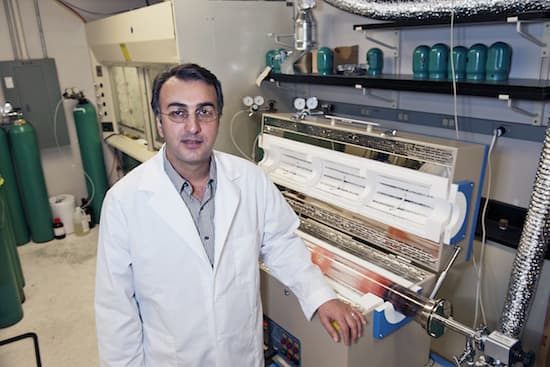Conversion of Carbon Dioxide into Fuel Possible - University of Illinois Research
The possibility of converting carbon dioxide into fuel is as applause worthy as it is the need of the hour. Scientists from all over the world are working on developing alternative fuel options. The team of researchers from University of Illinois at Chicago is one such that to have brought forward an interesting experiment with results that can bring a revolution in the way we look at fuel generation. They have synthesized a catalyst that has made possible the conversion of waste carbon dioxide into syngas, a precursor of gasoline and other products that are rich in energy. There are certain existing systems sitting in labs, but this catalyst could be the determining factor of how the process can be brought to commercial use in near future.
Along with his team, Prof. Amin Salehi-Khojin, from the mechanical and industrial engineering department at UI developed a two-step catalytic process using molybdenum disulfide and an ionic liquid to “reduce†or transfer electrons, to CO2 in a chemical reaction. The great thing about this catalyst is that it replaces costly metals such as silver or gold used in the reduction reaction and thus makes the process cheaper and more efficient.

Prof. Amin Salehi-Khojin at UIC
Without the necessity of a secondary gasification process, the team has been able to reduce CO2 to Syngas in a reaction that can last for hours. In similar systems in existence today, the only reaction product is carbon monoxide. The Syngas produced here is a mixture of carbon monoxide and hydrogen. Unlike Graphene, here the need of playing with the chemistry of molybdenum disulfide is avoided, and the catalytic activity is on the edges, instead of crystal structure, which is the case of gold and silver.
Moreover, the new catalyst can easily manipulate the proportion of carbon monoxide to hydrogen in the syngas produced. The team is now working on taking their innovation out of the labs into the real arena of the practical world applications. Conversion of a waste gas like carbon dioxide to produce an alternative source of energy at large-scale is not only eco-friendly but the call of the nature. We would like to know your thoughts on the new process. Share your thoughts in comments.
Source: #-Link-Snipped-#
Along with his team, Prof. Amin Salehi-Khojin, from the mechanical and industrial engineering department at UI developed a two-step catalytic process using molybdenum disulfide and an ionic liquid to “reduce†or transfer electrons, to CO2 in a chemical reaction. The great thing about this catalyst is that it replaces costly metals such as silver or gold used in the reduction reaction and thus makes the process cheaper and more efficient.

Prof. Amin Salehi-Khojin at UIC
Without the necessity of a secondary gasification process, the team has been able to reduce CO2 to Syngas in a reaction that can last for hours. In similar systems in existence today, the only reaction product is carbon monoxide. The Syngas produced here is a mixture of carbon monoxide and hydrogen. Unlike Graphene, here the need of playing with the chemistry of molybdenum disulfide is avoided, and the catalytic activity is on the edges, instead of crystal structure, which is the case of gold and silver.
Moreover, the new catalyst can easily manipulate the proportion of carbon monoxide to hydrogen in the syngas produced. The team is now working on taking their innovation out of the labs into the real arena of the practical world applications. Conversion of a waste gas like carbon dioxide to produce an alternative source of energy at large-scale is not only eco-friendly but the call of the nature. We would like to know your thoughts on the new process. Share your thoughts in comments.
Source: #-Link-Snipped-#
0
